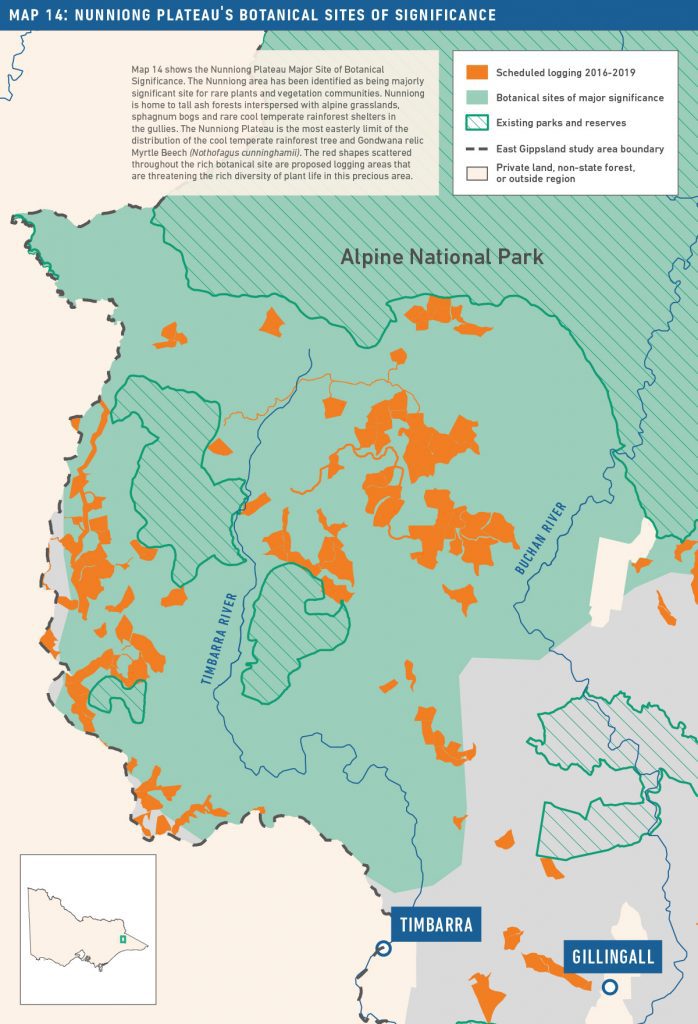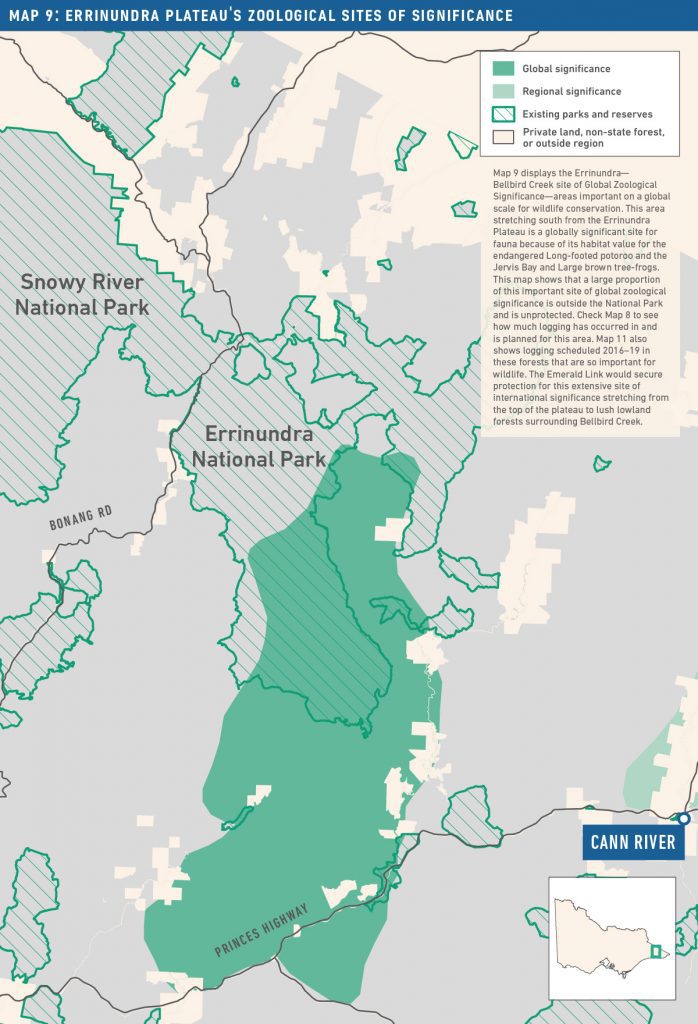Sites of Significance
Victoria’s rainforests were assessed by government botanists in the 1980s. The most significant stands of rainforest that were known at the time were mapped as ‘Sites of Significance’. The 120 identified Sites of Significance include subcatchment areas of eucalyptus forest that surround ‘core’ rainforest areas. The surrounding eucalyptus forest maintains the moist conditions the rainforest needs. It buffers the rainforest from fire, wind and invasive species. Logging is currently allowed in Rainforest Sites of Significance and is only restricted in the subcatchments of ‘nationally significant’ sites. Logging and management burns have destroyed critical forests within Rainforest Sites of Significance, placing vulnerable rainforest areas at great risk. Government scientific experts carried out assessments of East Gippsland’s flora communities in the 1980s. Botanists rated areas according to criteria such as presence of rare or restricted species, absence of introduced species, richness of vegetation (number of species), maturity of vegetation and proximity to outside disturbances. The Errinundra and Nunniong Plateaus are both ranked as major Sites of Significance due to the presence of rare plants, richness of vegetation types, rainforests and old growth forests. Sites of Zoological Significance were mapped by scientific experts in the early 1980s on behalf of the Victorian Ministry for Conservation. Twenty six Sites of Significance were identified in East Gippsland based on the richness of animal diversity within them. The Errinundra—Bellbird Creek is one of two sites ranked as a Global Site of Significance. This site encompasses the area to the south of the Errinundra Plateau including the Kuark Forest and the heritage listed catchments of the Arte and Goolengook Rivers.
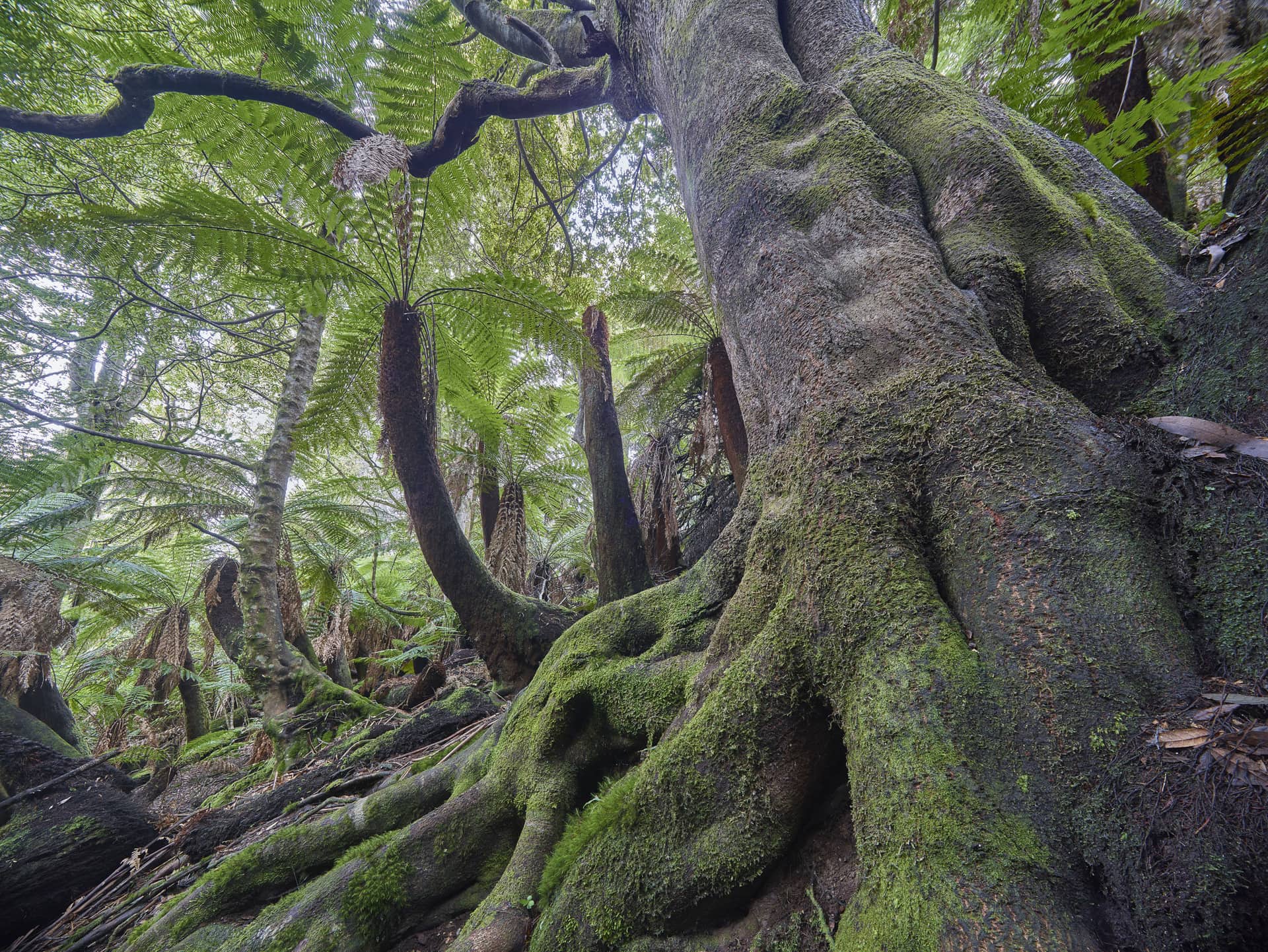
Rainforest Sites of Significance
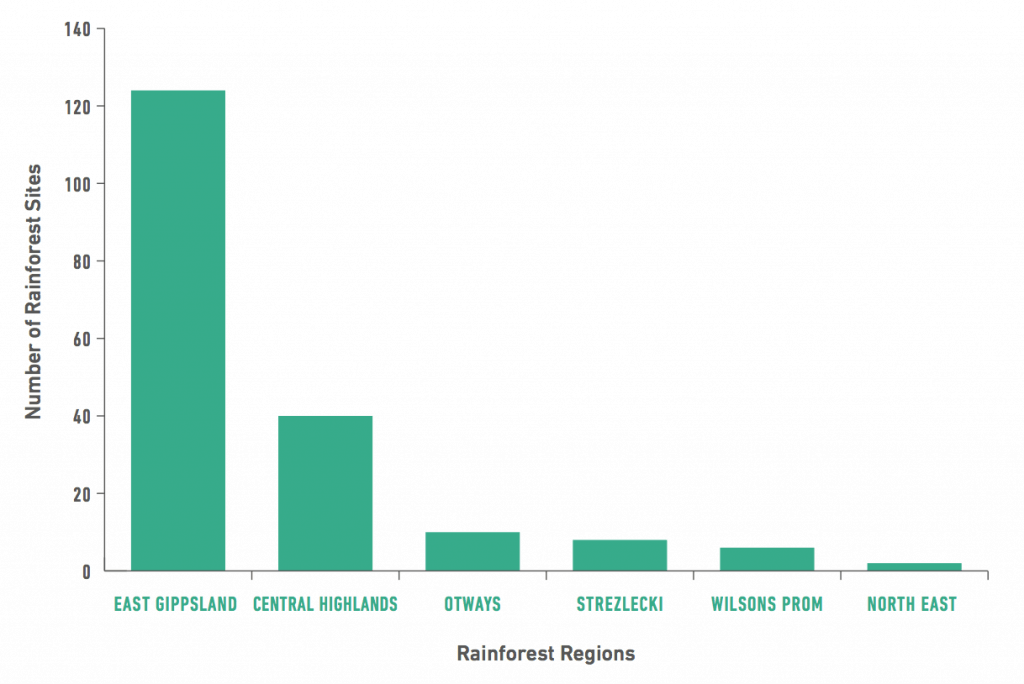
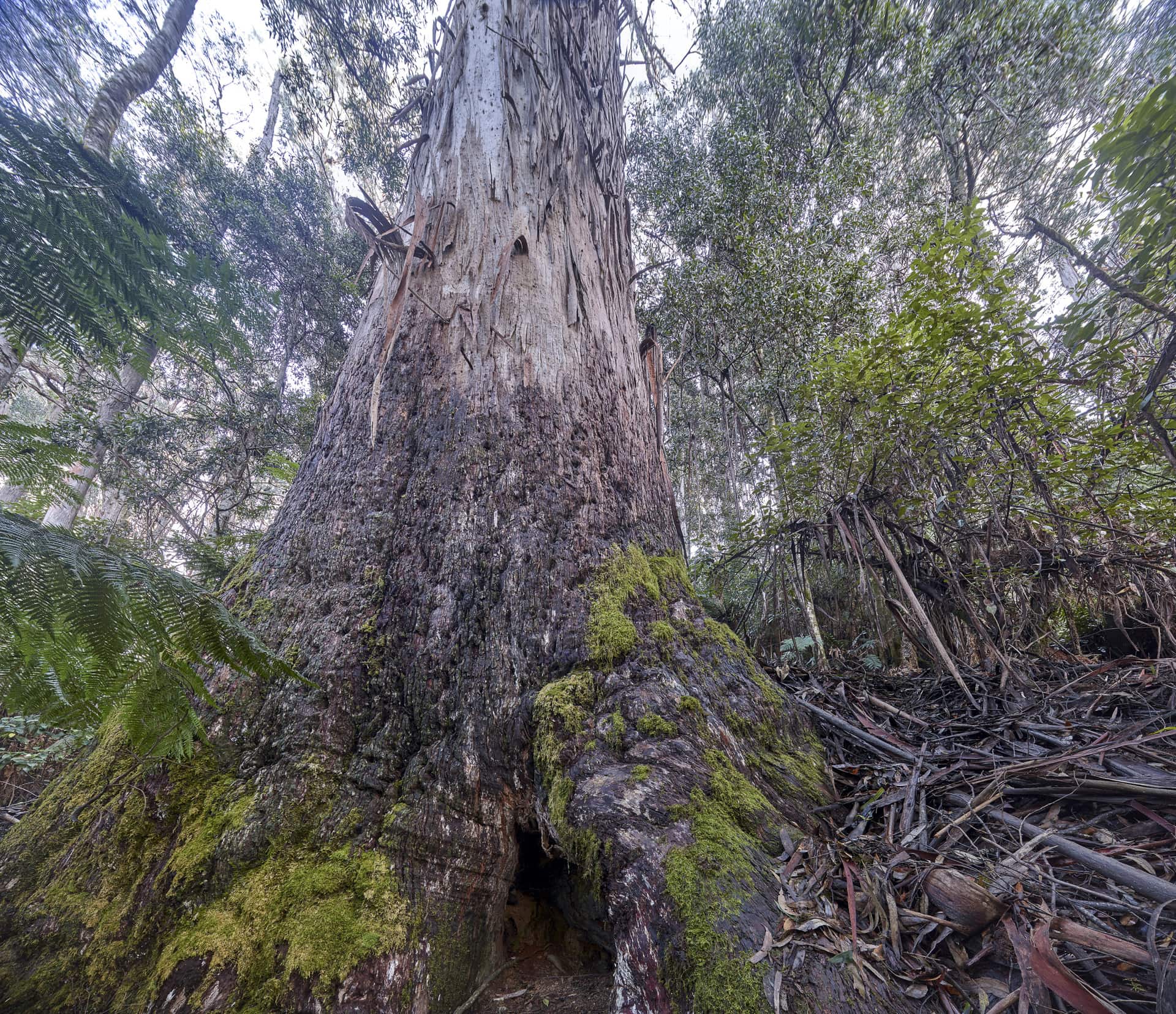
Botanical sites of significance
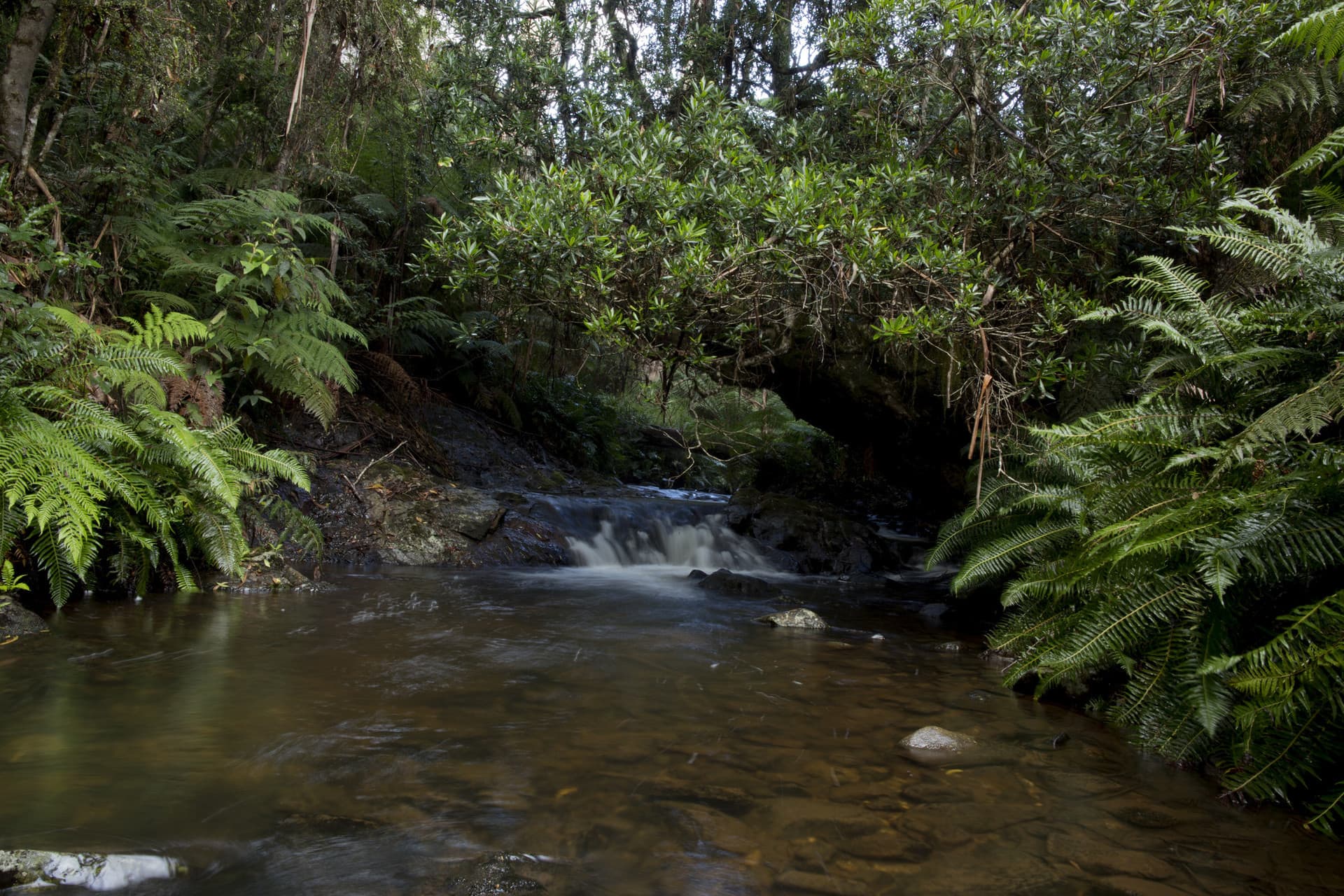
Zoological sites of significance



